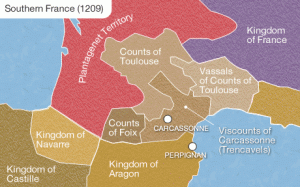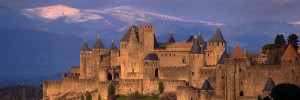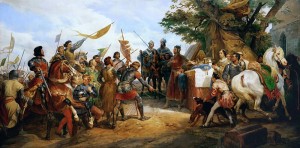Vladimir the Great is credited with transforming Kievan Rus into a true medieval state with Christianity at the heart of its sense of identity. The story is linked to the siege of the Crimean city of Cherson in 988 and the Byzantine Emperor Basil II the Bulgar Slayer
All posts by carlrylett
Cherson 988 Part 2, Crimea and Black Sea 500BC-800AD
Brief history of Crimea and North Black Sea region 500BC-800 AD, during which time many different peoples having left their mark, including Greeks, Scythians, Romans, Goths, Byzantines, Bulgarians and Khazars
Cherson 988, Part 4, Early Kievan Rus. Rurik to Svyatoslav
The dynasty of Rurik builds the foundations of a new power in eastern Europe – Kievan Rus. Princess Olga takes vengeance on a rebel town by burning it down, but after converting to Christianity was later sainted. Her son, Syvatoslav defeats the Khazars and then tries to resettle his people in Bulgaria before his early death
Cherson 988 Part 3, Origins of the Slavs
The origins of the Slavs are shrouded in uncertainty. We rely on scraps of contemporary writings and later writings such as The Primary Chronicle of Kievan Rus. They tell us of the unification by Vikings of scattered tribes in the region of the Baltic – Black Sea waterways
Cherson 988, Part 1, Early History of The Black Sea
Early History of The Black Sea, Perspectives on Ukrainian and Russian History.
Intro is the Russian Presidential Address of 2014. Then an outline of different perspectives on Russian History, and next a description of the geography and early history of the Black Sea region from the time of the Ancient Greeks
Albigensian Crusade, Second Half 1215-1229
Simon de Montfort probably hoped to quickly finish off the last pockets of resistance after the Battle of Muret. Instead conflict continued for another one and a half decades. What would happen to Simon, to Count Raymond and the people of Languedoc at this critical period for the region?
Battle of Muret 1213, Part 3
In September 1213 in southwestern France two Christian armies faced each other off. One was led by King Peter II of Aragon, who after his glorious victory against a Muslim army at the Battle of Las Navas de Tolosa the previous year, was not only one of the most respected monarchs of Christendom but a favoured son of the Church. The other army was composed of crusaders, mainly from northern France, fighting on behalf of the Pope to root out heresy from the French region of Languedoc.


